Soaring rates of short-sightedness in children are alarming parents and doctors around the world. Can we turn the tide?
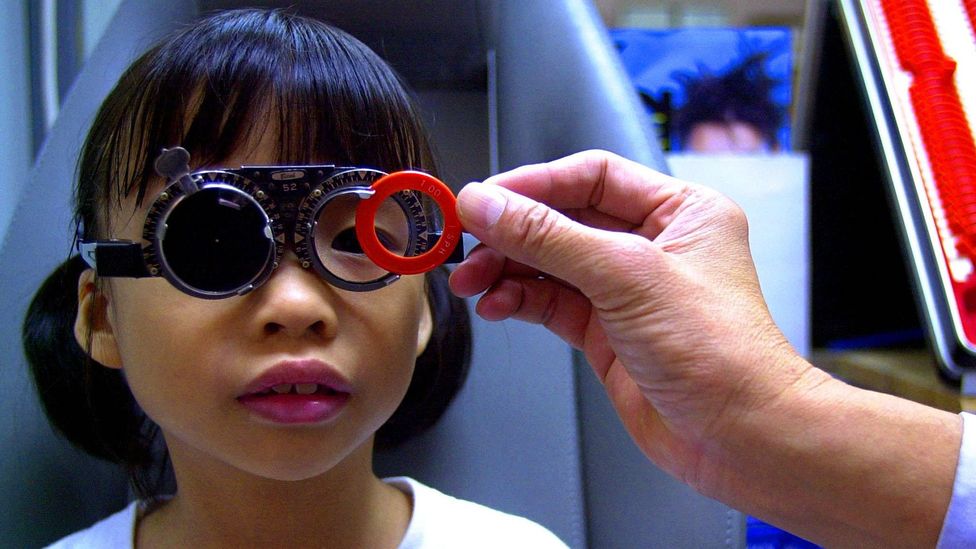
In the late 1980s and 1990s, parents in Singapore began noticing a worrying change in their children. On the whole, people’s lives in the small, tropical nation were improving hugely at the time. Access to education, in particular, was transforming a generation and opening the gates to prosperity. But there was a less positive trend, too: more and more children were becoming short-sighted.
Nobody was able to stop this national eyesight crisis. Rates of short-sightedness – also known as near-sightedness or myopia – continued to rise and rise. Today, Singapore has a myopia rate of around 80% in young adults, and has been called “the myopia capital of the world”.
“We’ve been dealing with [this] issue for 20 years, so we’re almost numb to it,” says Audrey Chia, an associate professor and senior consultant at the Singapore National Eye Center (SNEC). “Almost everybody in Singapore is myopic now.”
What happened in Singapore now appears to be happening all over the world. Countries with seemingly completely different lifestyles are unified by a startling phenomenon: rocketing rates of short-sightedness.
In the United States, about 40% of adults are short-sighted, up from 25% in 1971. Rates have similarly soared in the UK. But their situation pales in comparison with that of teens and young adults in South Korea, Taiwan and mainland China, whose prevalence rates are between 84% and 97%. If current trends continue, half the world’s population will be short-sighted by 2050. And the problem seems to be spreading at a faster rate than ever.
Myopia has risen dramatically among children in China to reach 76%-90% among older school children. “It has been an extremely steep rise,” says Chia.
At first glance, the idea of a short-sighted world may not seem like a major problem. After all, when someone struggles to see things at a distance, we have a proven fix: glasses. But researchers warn that myopia is not a benign quirk. It is one of the leading causes of vision impairment and blindness, for example.
And in children, where it may take some time to spot the problem and correct it, it can hurt their ability to learn in school and enjoy daily life – and set them up for future eye health problems.
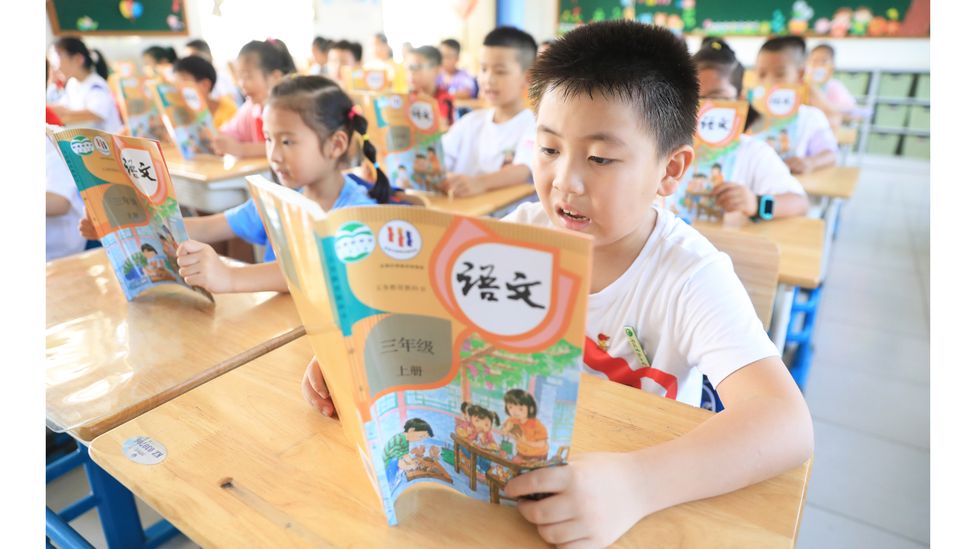
A classroom in China, where short-sightedness has been on the rise among children and teens.
To make matters worse, while the typical age for a child to develop myopia is between eight and 12 years old, children are becoming myopic at a younger age. The earlier a child develops myopia, the more likely it is that they will have severe myopia in adulthood that can ultimately threaten their eyesight, by causing problems related to different parts of the eye such as glaucoma, retinal detachment, cataracts, and myopic maculopathy.
What explains this global eyesight crisis?
Genetics play only a small part. While a family history of myopia raises the risk of a child developing it, a purely genetic case of myopia is rare, says Neema Ghorbani-Mojarrad, a lecturer at the University of Bradford in the UK and a registered optometrist.
Instead, lifestyle factors are thought to be more significant, in particular, a lack of time outdoors, and focusing on close objects for an extended period through an activity like reading. These factors help explain why one otherwise thoroughly positive trend in children’s lives has unintentionally worsened the spread of myopia: education.
Of course, education in itself – in the sense of discovering the world, and empowering oneself through knowledge and skills – does not cause poor eye health. In fact, education is associated with many positive, measureable health effects. But the way children obtain an education in the modern world, with the emphasis on long hours spent in classrooms, appears to be consistently hurting their eye health.
“Education has been shown to cause short-sightedness,” says Ghorbani-Mojarrad, referring to education as measured by school years. “We don’t know what it is about education – we suspect it is reading and spending more time indoors. Every year of education completed increases the expected amount of short-sightedness.”
The education paradox
Ghorbani-Mojarrad and his colleagues studied the effect of education, as measured by school years, on myopia, by investigating the impact of the UK’s raising of the school leaving age from 15 to 16, in the 1970s. “There’s literally a bump in the chart for the extra year of school. Now that the leaving age is 18 in the UK, I wonder whether we will find the same thing again,” he says.
To understand this surprising link, it helps to parse how myopia develops in the first place. Most newborn babies begin life long-sighted. Within the first year of life, the eyes naturally develop and the long-sightedness reduces to the point of their vision becoming almost perfect. However, in some cases the eyes do not stop growing and short-sightedness develops. The eyeball is too elongated to be able to make out objects at a distance without the help of a corrective measure such as glasses.
“Everyone has a finite amount of retina, and if the eye continues to grow, it’s like trying to scrape the same amount of butter on a larger piece of bread,” says Ghorbani-Mojarrad. “The retina becomes really thin and is more prone to tearing.”
It appears that being indoors may worsen this problem, perhaps because of the way indoor lighting differs from natural light.
My father’s generation spent a lot of time outdoors. But then urbanisation came to Singapore and there was a great push for academic excellence. It drove all the children indoors – Audrey Chia
In Singapore, which has undertaken some of the longest-running research on childhood myopia, experts have reached a similar conclusion.
“My father’s generation spent a lot of time outdoors fishing and things,” says Chia. “But then urbanisation came to Singapore and there was a great push for academic excellence. Parents wanted their kids to get into the best school and go to university. It drove all the children indoors for more reading, because reading was supposed to be good for you.”
The paradox is, of course, that reading is good for children – measurably so. Literacy, and schooling more generally, is crucial for children’s wellbeing, and missing out on them can cause lasting damage.
But pursuit of educational excellence to the exclusion of other aspects of life, such as spending time outside, can be detrimental to eye health, says Nathan Congdon, professor of global eye health at the Centre for Public Health at Queen’s University Belfast.
He points out that countries like Japan, Korea, Vietnam, China, Hong Kong and Singapore that have very high rates of myopia: “They’ve also got huge educational success. It is a complicated cultural phenomenon.”
In China, trials have been conducted in classrooms that mimic learning in the outdoors. Children and teachers in a 2017 study by Zhongshan Ophthalmic Center, where Congdon also works, preferred the bright classrooms that resemble a glasshouse, as compared with a traditional classroom. However in summer and on sunny days, the light intensity was at the “practical upper limit for routine use”. The bright classroom is also twice as expensive to build as a regular classroom, partly because cooling mechanisms are required.
This complex problem – myopia as a bad side effect of an otherwise positive trend – also shows up in another area: income levels.
Like education, a higher income is generally associated with greater wellbeing in children – but not when it comes to eye health. Instead, myopia is associated with higher socioeconomic status.
As Congdon explains: “The richer we get, the better we are at protecting our children from ever going outdoors, because they’ve got more things to do. They’ve got to play the piano and learn saxophone and watch TV, and so forth.”
The literacy effect
In low- and middle-income countries, myopia rates still tend to be lower – Bangladesh and India for example report rates of about 20-30% in adults – but this is changing. In Africa, for example, myopia used to be comparatively uncommon, but over the past ten years the prevalence of childhood myopia has been rising fast. In addition, lower-income countries may lack the resources to diagnose and correct short-sightedness in children, with a massive impact on their lives and education. Some communities in Africa have reported having no access to spectacles at all, and very little access to eye care. Being unable to see properly means children can’t follow what their teacher writes on the board, and may also find it hard to participate in other routine school activities.
As literacy rates improve in those countries – an otherwise welcome development – that problem could grow, unless there is a big effort to also provide eye tests and glasses, experts warn.
“We can expect myopia rates to continue to climb because countries like India are getting more kids into school,” says Congdon. “And if kids are spending more time in school, they’re spending more time reading and less time outdoors.”
School time in itself is, however, not necessarily the root of the problem, as the Covid-19 pandemic lockdowns have shown. It is staying indoors that appears to be. During the lockdowns, schools shut down all over the world – but children’s eye health became even worse. Typically, they stayed inside during the lockdowns, and spent hours staring at screens, either following classes or watching TV, as other forms of learning and entertainment disappeared.

Singaporean children play by the harbour in the early 1960s. As the country became wealthier, children began spending more and more time indoors (Credit: Getty Images)
IN BRIEF: CAN YOU PREVENT SHORT-SIGHTEDNESS IN CHILDREN?
Short-sightedness rates in children and young people are soaring around the world, with some countries reporting rates of more than 80% or even 90%. The causes are complex, and researchers are still investigating a range of different factors. But one known factor is too much time spent indoors – whereas time spent outdoors, in natural light, is thought to benefit eye health. If you have any specific concerns over your child’s eyesight, it is important to ask your health care provider for advice.
Lockdown vision
Because of the legacy of the lockdowns, Chia’s biggest concern at the moment is for children aged between four and six. “We’re worried that due to Covid-19, children were spending even more time indoors and that rates have gone up,” says Chia. “We’re waiting for our data to find out.”
Data from China already shows that the lockdowns did in fact deal a blow to young children’s eye health. One study compared myopia rates among children, measured by annual screenings. Before the pandemic, in the years from 2015-19, the highest myopia rate measured among six-year-old children was 5.7%. In June 2020, after 5 months of home confinement, researchers measured children’s eyesight in that age group and found that the rate that shot up to 21.5%, says David C. Musch, one of the study’s co-authors and a professor of ophthalmology and visual sciences, and epidemiology, at the University of Michigan.
Researchers have referred to this effect as “quarantine myopia” – basically, lockdown-induced short-sightedness.
Due to pandemic lockdowns, myopia is also becoming a concern in countries that were not much troubled by it before. This can be particularly noticeable in countries where children generally roamed outdoors before the pandemic – but found themselves suddenly confined.
“In countries with outdoor lifestyles, there may be a dramatic increase in myopia rates due to pandemic lockdowns,” says Chia. “In countries like Singapore, where we don’t go outdoors much, the change caused by the pandemic may not be as big.”
Protecting children’s eyesight
Faced with these facts, many parents may be wondering what they can do to protect their child’s eyesight. And since eye health if a global issue, many countries have made it a priority, too. China, for example, is pursuing a slew of different strategies, warning that widespread near-sightedness could cause labour shortages in a slew of industries.
“A majority of the interventions that exist to stop short-sightedness getting worse were developed or tested in China,” says Ghorbani-Mojarrad.
The results have been mixed. Eye exercises, which were previously recommended as a low-cost health strategy, were found to be insufficient in preventing myopia in the long-term. China has limited children’s video gaming to a set amount of time per week – but this was largely directed at concerns over the perceived negative influence of gaming, rather than screen time itself. As for the potential link between screen time and myopia, the evidence is not conclusive.
If your child really likes screentime, just sit them outside while they do it – Neema Ghorbani-Mojarrad
“There are many different types of screens and so many variables, so it is difficult to get accurate risk data,” says Ghorbani-Mojarrad. “As a parent, it’s probably worth being cautious about screens particularly because the evidence shows that it might be a factor. If your child really likes screentime, just sit them outside while they do it.”
Other solutions hinge on technological advances. Singapore’s myopia strategy, for example, includes special contact lenses or glasses. Its researchers have found no evidence to suggest that treatments such as oral supplements, eye exercises, eye relax machines, acupressure or magnetic therapy, are effective. Simple eye drops, however, may help.
A new red-light therapy may also hold promise. “The machine emits a red light into a child’s eye for a few minutes a day for five days a week. It has been shown to slow the amount of short-sightedness developing. But we do not fully understand why,” Ghorbani-Mojarrad says.
Ultimately, the right treatment depends on the child, experts say. If parents are worried, they should speak to an optometrist.
But for now, some of the most powerful solutions – be it to manage or prevent myopia – are surprisingly simple.
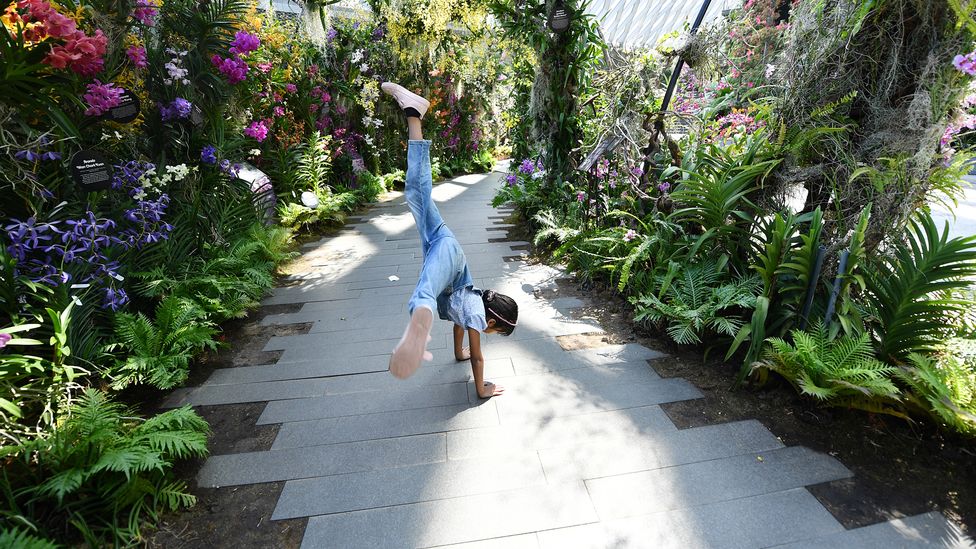


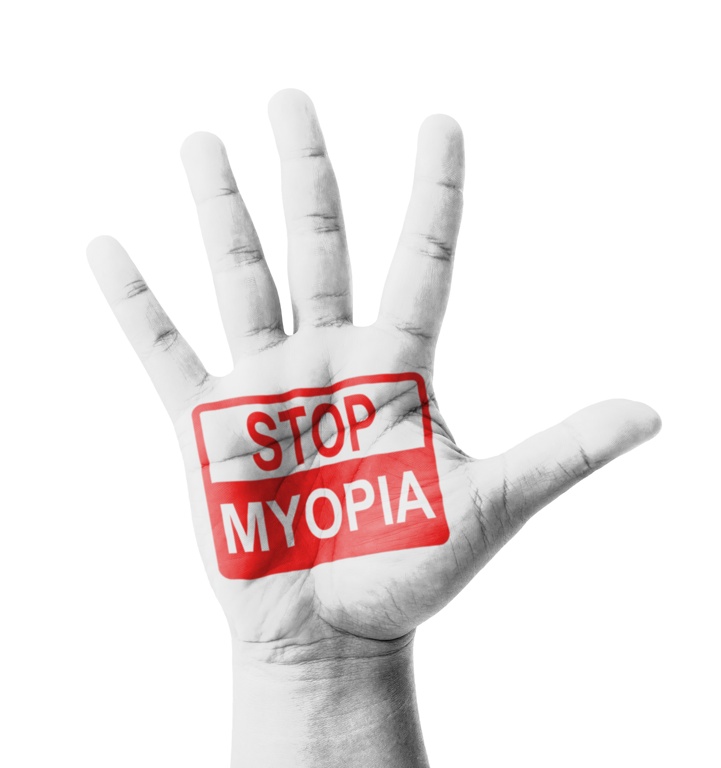
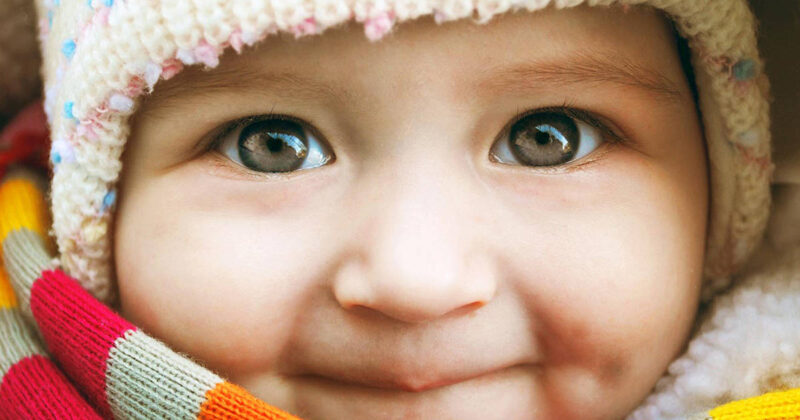


Recent Comments